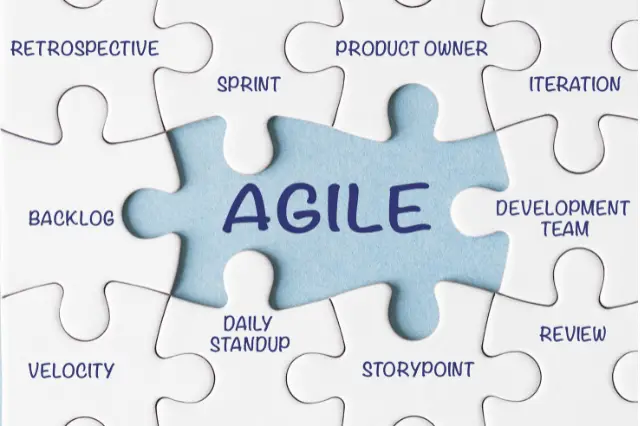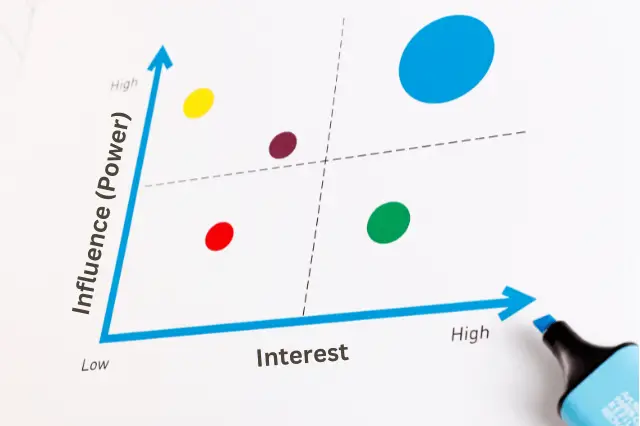Last Updated on September 2, 2024 by andrewshih
Have you ever wondered how to accurately estimate the cost and duration of a complex project? Bottom-up estimating might be the solution you need. So, what is bottom-up estimating?
This fundamental project management technique involves estimating the cost of individual tasks and summing them to get the project total. This article will explore what bottom-up estimating is, its purpose, when to use it, and its advantages and disadvantages.
We will also discuss the steps involved, provide examples, highlight potential pitfalls, and compare it with other estimating techniques.
- What is Bottom-Up Estimating?
- Purpose of Bottom-Up Estimating
- When to Use Bottom-Up Estimating
- Advantages and Disadvantages of Bottom-Up Estimating
- Steps in Bottom-Up Estimating
- Example of Bottom-Up Estimating
- Mistakes to Avoid
- Bottom-Up Estimating vs Other Estimating Techniques
- Tools for Bottom-Up Estimating
- Conclusion
- FAQ
What is Bottom-Up Estimating?
Bottom-up estimating is a detailed approach to estimating project costs and durations. By breaking down the project into smaller, manageable components, each element is individually estimated and then aggregated to form a comprehensive estimate for the entire project. This technique is particularly useful for complex projects where accuracy is critical.
Bottom-up estimating involves the following key activities:
- Task Breakdown: Decomposing the project into smaller, manageable tasks or work packages.
- Individual Estimations: Estimating the cost and duration for each task independently.
- Aggregation: Summing the individual estimates to derive the total project cost and duration.
Purpose of Bottom-Up Estimating
The primary purpose of bottom-up estimating is to provide a precise and comprehensive estimate of project costs and timelines. This method allows project managers to understand the intricacies of each task, making it easier to identify potential risks and allocate resources effectively. The detailed nature of bottom-up estimating helps in creating a realistic project plan and budget, which is crucial for project success.
When to Use Bottom-Up Estimating
Bottom-up estimating is best used in the following scenarios:
-
Complex Projects: Where detailed and accurate estimates are essential due to the complexity and scale of the project.
-
High-Value Projects: Where the cost of errors is significant, and precision in estimates is critical.
-
Detailed Planning Stages: When detailed task information is available, allowing for accurate individual estimates.
Bottom-up estimating is particularly effective in industries such as construction, software development, and engineering, where projects are typically complex and require detailed planning.
Advantages and Disadvantages of Bottom-Up Estimating
Advantages
-
Accuracy: Provides highly accurate estimates by considering each task individually. This precision helps in better budget management and resource allocation.
-
Risk Management: Helps in identifying potential risks early in the project by analyzing each task in detail. This allows for the development of mitigation strategies.
-
Resource Allocation: Enables precise allocation of resources by understanding the specific needs of each task. This leads to more efficient use of resources and reduces wastage.
-
Transparency: Provides a clear understanding of the project scope and requirements, which improves communication among stakeholders.
Disadvantages
-
Time-Consuming: Requires significant time and effort to estimate each task. This can be a drawback in fast-paced projects where quick estimates are needed.
-
Complexity: Can be complex and difficult to manage for very large projects. The process of breaking down the project into detailed tasks and estimating each one can be overwhelming.
-
Requires Detailed Information: Not suitable for projects where detailed task information is not available. This method relies on having comprehensive knowledge about each task, which might not always be possible.
Steps in Bottom-Up Estimating
- Identify Tasks: Break down the project into smaller, manageable tasks. This is often done using a Work Breakdown Structure (WBS), which decomposes the project into hierarchical levels of detail.
- Estimate Costs and Durations: Estimate the cost and duration of each task. This can be done using historical data, expert judgment, or industry benchmarks. It is important to consider all aspects of each task, including labor, materials, equipment, and overheads.
- Sum the Estimates: Aggregate the individual estimates to get the total project estimate. This involves summing up the costs and durations of all tasks to derive the overall project budget and timeline.
- Review and Refine: Review the estimates for accuracy and make necessary adjustments. This step involves validating the estimates with stakeholders and refining them based on feedback.
Example of Bottom-Up Estimating
Let’s consider a detailed example of a software development project to illustrate the bottom-up estimating process.
Project Scope: Develop a new e-commerce website with features such as user registration, product catalog, shopping cart, payment gateway integration, and order management.
Work Breakdown Structure (WBS):
- Requirements Gathering:
- Conduct stakeholder interviews: 40 hours at $50/hour = $2,000
- Document requirements: 60 hours at $50/hour = $3,000
- Design:
- Create wireframes: 80 hours at $60/hour = $4,800
- Design database schema: 100 hours at $60/hour = $6,000
- Development:
- Front-end development: 300 hours at $70/hour = $21,000
- Back-end development: 400 hours at $70/hour = $28,000
- Testing:
- Unit testing: 100 hours at $55/hour = $5,500
- Integration testing: 120 hours at $55/hour = $6,600
- Deployment:
- Setup server: 20 hours at $65/hour = $1,300
- Deploy application: 30 hours at $65/hour = $1,950
Total Estimate:
- Requirements Gathering: $2,000 + $3,000 = $5,000
- Design: $4,800 + $6,000 = $10,800
- Development: $21,000 + $28,000 = $49,000
- Testing: $5,500 + $6,600 = $12,100
- Deployment: $1,300 + $1,950 = $3,250
- Total Project Cost: $5,000 + $10,800 + $49,000 + $12,100 + $3,250 = $80,150
In this example, each task is estimated individually, and the total project cost is derived by summing the individual estimates. This detailed approach ensures that all aspects of the project are considered, leading to a more accurate and comprehensive estimate.
Mistakes to Avoid
-
Underestimating Task Complexity: Ensure all aspects of each task are considered, including potential challenges and dependencies. Failing to account for complexities can lead to inaccurate estimates.
-
Overlooking Dependencies: Account for dependencies between tasks to avoid underestimating the timeline. Dependencies can impact the sequence and duration of tasks, so it is important to identify and manage them effectively.
-
Ignoring Small Costs: Even small costs can add up and impact the total estimate. It is important to include all costs, no matter how minor they may seem, to ensure an accurate estimate.
-
Over-Reliance on Historical Data: While historical data is useful, it should not be the sole basis for estimates. Each project is unique, and it is important to consider the specific requirements and conditions of the current project.
-
Inadequate Contingency Planning: Include contingency reserves to account for uncertainties and unexpected events. This helps in managing risks and ensures that the project stays on track even when issues arise.
Bottom-Up Estimating vs Other Estimating Techniques
Top-Down Estimating: This involves estimating the overall project cost and then breaking it down into smaller components. It is quicker but less detailed and accurate compared to bottom-up estimating. Top-down estimating is often used in the initial stages of a project when detailed information is not available.
Analogous Estimating: Uses historical data from similar projects to estimate costs. It is quicker but less accurate than bottom-up estimating. Analogous estimating relies on the assumption that the current project is similar to past projects, which may not always be the case.
Parametric Estimating: Uses statistical relationships between historical data and other variables to estimate costs. It is useful for projects with quantifiable parameters and can provide accurate estimates when the right data is available. Parametric estimating is often used in conjunction with other estimating techniques to enhance accuracy.
Three-Point Estimating: Incorporates three scenarios (optimistic, pessimistic, and most likely) to provide a range of estimates. It helps in managing uncertainties and provides a more realistic estimate. Three-point estimating is particularly useful in projects with high levels of uncertainty and risk.
Tools for Bottom-Up Estimating
- Microsoft Project: Offers comprehensive project management and estimating capabilities. It allows project managers to create detailed WBS, assign resources, and track progress.
- Primavera P6: A powerful tool for managing and estimating large-scale projects. It provides advanced features for scheduling, resource management, and risk analysis.
- Excel: Useful for smaller projects and quick estimates. Excel provides flexibility and ease of use for creating and managing estimates.
These tools can significantly enhance the efficiency and accuracy of bottom-up estimating by automating calculations, providing templates, and facilitating collaboration among team members.
Conclusion
Bottom-up estimating is an essential technique for project managers seeking accuracy and detailed insight into project costs and timelines.
While it can be time-consuming and complex, the benefits often outweigh the challenges, particularly for large and high-value projects. By understanding the steps involved and the potential pitfalls, project managers can effectively utilize bottom-up estimating to enhance project planning and execution.
This detailed approach not only provides a comprehensive estimate but also improves risk management, resource allocation, and stakeholder communication.
As a project manager, mastering bottom-up estimating can significantly contribute to the success of your projects by ensuring that they are planned, executed, and completed within the allocated budget and timeline.
FAQ
What types of projects benefit most from bottom-up estimating?
Bottom-up estimating is particularly beneficial for large, complex projects that require detailed planning and accurate cost and time estimations. Examples include construction projects, software development, and engineering projects.
How does bottom-up estimating improve project transparency?
By breaking down the project into smaller tasks and estimating each one individually, bottom-up estimating provides a clear and detailed view of the project’s scope, making it easier for stakeholders to understand and track progress.
Can bottom-up estimating be used in agile project management?
Yes, bottom-up estimating can be used in agile project management. It helps in providing detailed estimates for sprints or iterations, improving planning and resource allocation.
How do project managers ensure accuracy in bottom-up estimating?
Accuracy can be ensured by using historical data, consulting experts, and validating estimates with team members. Regularly reviewing and updating estimates as more information becomes available also helps maintain accuracy.
What role does a Work Breakdown Structure (WBS) play in bottom-up estimating?
A WBS is crucial in bottom-up estimating as it breaks down the project into smaller, manageable tasks. This detailed task breakdown forms the basis for accurate individual estimates.
How can bottom-up estimating handle project changes?
Bottom-up estimating is flexible and allows for adjustments. When changes occur, project managers can re-estimate the affected tasks and update the overall project estimate accordingly.
Is bottom-up estimating suitable for all project phases?
While it is most beneficial during the planning phase, bottom-up estimating can be used throughout the project lifecycle to refine estimates and ensure accurate tracking of costs and timelines.
How does bottom-up estimating facilitate better communication with stakeholders?
The detailed nature of bottom-up estimating provides clear and transparent information about project costs and timelines, making it easier to communicate with stakeholders and gain their confidence.
How does bottom-up estimating contribute to project risk management?
By providing detailed estimates for each task, bottom-up estimating helps identify potential risks early in the project, allowing for the development of mitigation strategies and better risk management.



